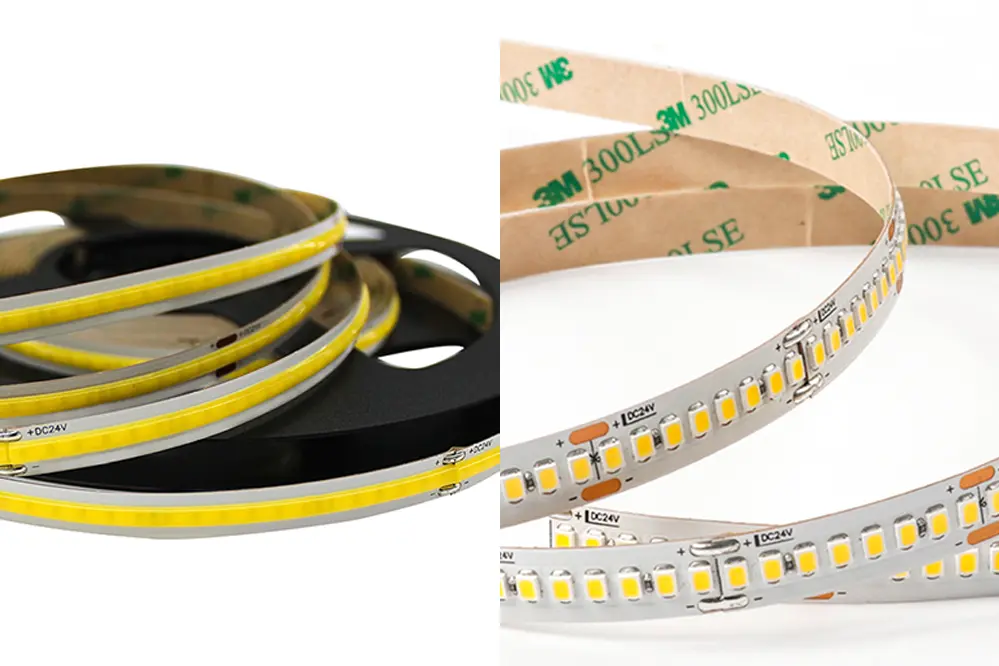Choosing the right type of LED strip for your lighting needs can be a daunting task. With the market flooded with options, understanding the differences between COB and SMD LED strips can help you make an informed decision. In this guide, we’ll delve into the unique features, benefits, and applications of COB and SMD LED strips, ensuring you choose the best option for your specific requirements.
Key Takeaways
• COB LED strips offer superior light uniformity and higher brightness compared to SMD LED strips.
• SMD LED strips are more versatile, cost-effective, and widely used in various applications.
• Both types have distinct advantages depending on your specific lighting needs.
Part 1: Introduction to LED Strips
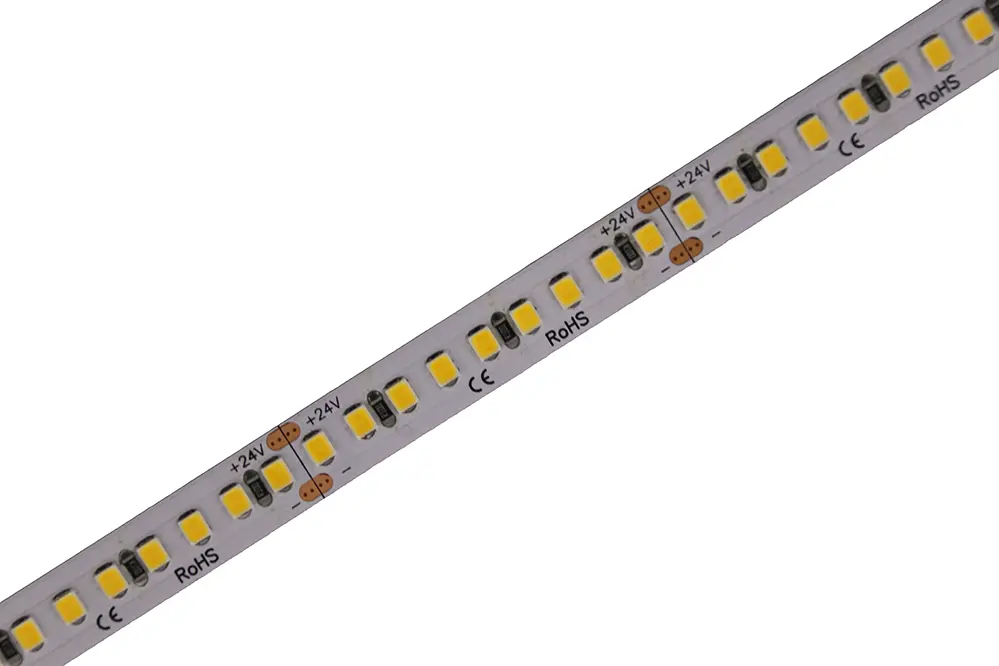
What are LED Strips?
LED strips are flexible circuit boards adorned with light-emitting diodes (LEDs). These strips are widely used for both decorative and functional lighting in homes, offices, and a myriad of other settings. Their flexibility and ease of installation make them a popular choice for lighting designers and DIY enthusiasts alike.
Overview of COB and SMD LED Strips
COB (Chip on Board) LED Strips feature multiple LED chips mounted directly onto a substrate, forming a single module. This configuration allows for a more compact design and better light distribution.
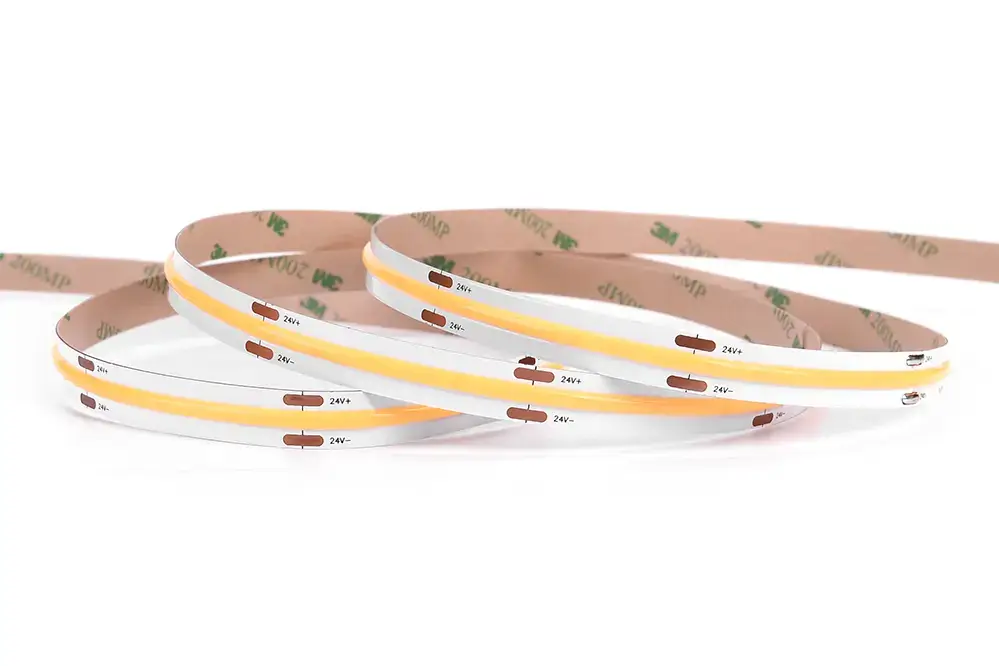
SMD (Surface Mounted Device) LED Strips consist of individual LED chips mounted onto the strip. Each chip operates independently, providing more flexibility and a wider range of applications.
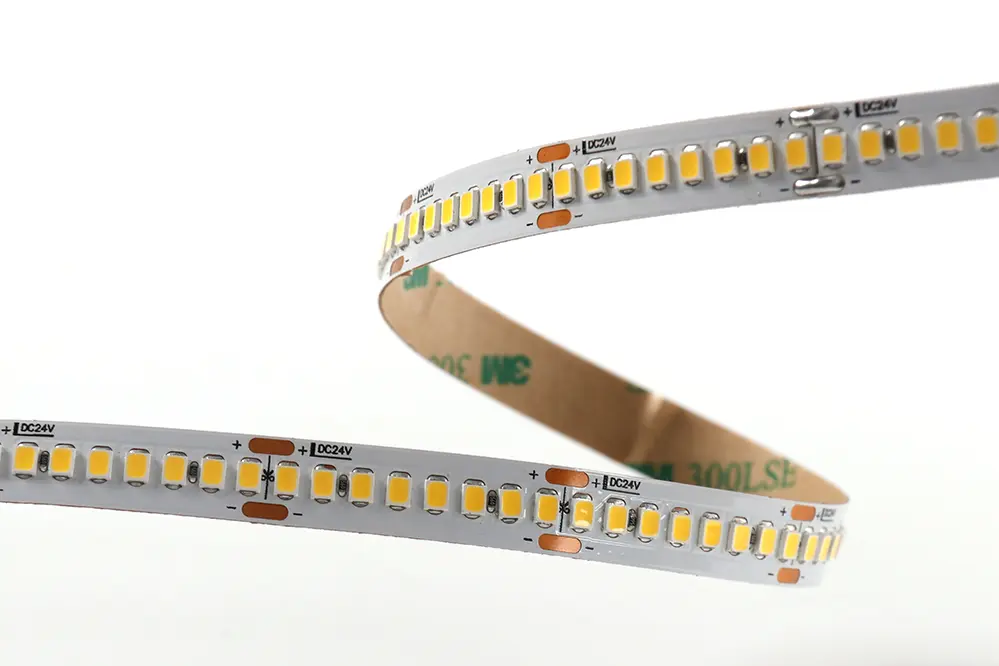
Key Differences at a Glance
| Feature | COB LED Strip | SMD LED Strip |
| Light Uniformity | Excellent, seamless light output | Moderate, visible light dots |
| Brightness | Lower brightness per unit length | Higher brightness per unit length |
| Heat Dissipation | Better, due to direct mounting | Varies, generally moderate |
| Flexibility | Moderate | High |
| Applications | Specialized lighting, high-end design | General use, versatile applications |
Part 2: Detailed Comparison
Brightness and Light Quality
COB LED Strips:
• Offer high brightness due to closely packed LED chips.
• Provide a seamless, continuous light output without visible dots, creating a smooth and uniform light effect. This makes them ideal for settings where a consistent light appearance is critical, such as in art galleries or retail displays.
SMD LED Strips:
• Brightness varies with the type of SMD chip used (e.g., 3528, 5050, 2835). The numbers refer to the dimensions of the chip in millimeters. Can offer higher lumen than COB LEDs if using more LEDs on the strips.
• Light output is characterized by visible dots, which can be diffused with covers or diffusers to achieve a smoother light effect. SMD strips are commonly used in places where direct lighting isn’t as critical, like accent lighting behind furniture or under cabinets.
Heat Dissipation
COB LED Strips:
• Better heat dissipation due to the larger surface area of the chip board. This reduces the risk of overheating and extends the lifespan of the LEDs.
• The direct mounting of multiple chips on a substrate enhances thermal management, making them more reliable for long-term usage in various environments.
SMD LED Strips:
• Heat dissipation depends on the chip size and spacing. While generally effective, high-power applications may require additional heat sinks to manage temperature.
• Independent chips may generate more localized heat, which can affect longevity if not properly managed. This is particularly important in enclosed or compact installations where ventilation may be limited.
Flexibility and Installation
COB LED Strips:
• Less flexible compared to SMD strips. They are best suited for linear installations or applications where minimal bending is required.
• Installation is straightforward but may require careful handling to avoid damaging the strip. These strips are perfect for linear, uninterrupted lighting solutions like in long hallways or large rooms.
SMD LED Strips:
• Highly flexible and can be bent around corners, making them ideal for dynamic installations requiring various shapes and curves.
• Easy to cut and connect, offering versatility for custom installations. This flexibility allows for creative lighting designs in residential and commercial spaces, from under-cabinet lighting to outdoor garden lights.
Applications and Use Cases
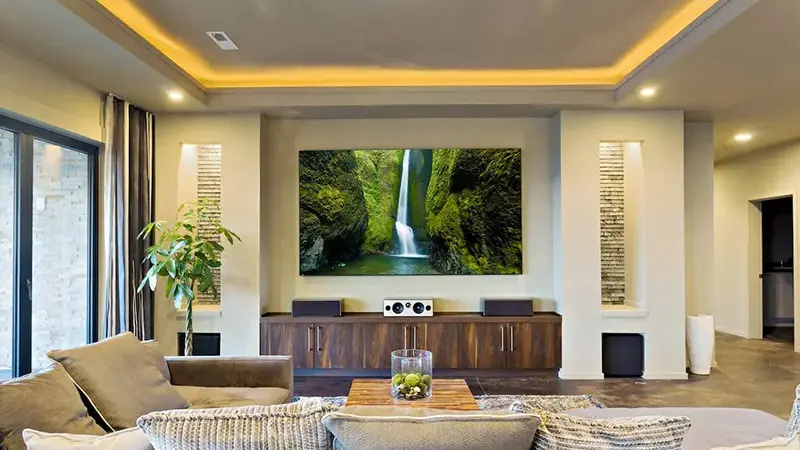
COB LED Strips:
• Ideal for high-end retail displays, architectural lighting, and task lighting where uniform, bright light is essential.
• Perfect for applications that require a continuous light output, such as under-cabinet lighting, display cases, and photography lighting where a consistent light source is crucial.
SMD LED Strips:
• Commonly used in residential and commercial lighting, accent lighting, and DIY projects due to their versatility and ease of use.
• Suitable for both indoor and outdoor applications, with waterproof versions available for exterior use. SMD strips can be found in various creative installations, from mood lighting in bedrooms to vibrant outdoor setups for events.
Cost Comparison
COB LED Strips:
• Generally more expensive due to the advanced technology and manufacturing process. However, they may offer long-term savings through reduced energy consumption and fewer replacements.
• Higher upfront cost can be justified by the superior light quality and efficiency. This makes them a worthwhile investment for high-end or professional projects where quality is paramount.
SMD LED Strips:
• More affordable and widely available, making them a cost-effective choice for large-scale or temporary installations.
• Offers a good balance between performance and price, suitable for a wide range of budgets. They are an excellent choice for those looking to enhance their spaces without a significant financial commitment.
Practical Applications and Case Studies
Residential Applications
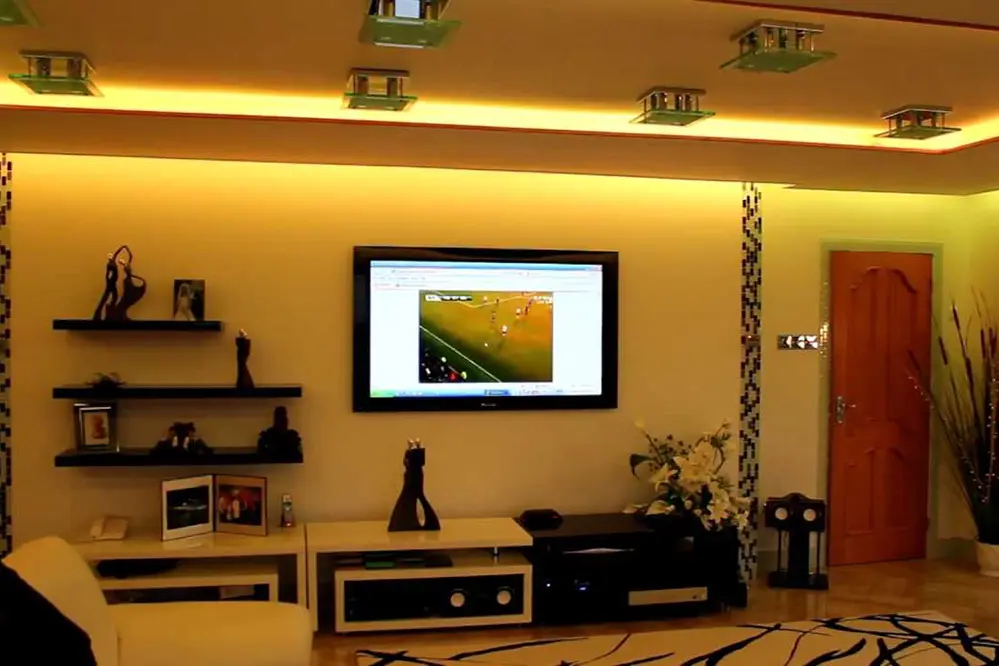
Living Room Lighting:
In a contemporary living room, the choice between COB and SMD LED strips can significantly impact the ambiance. COB strips, with their seamless light output, are perfect for cove lighting, providing a soft, diffused light that enhances the room’s aesthetic. SMD strips, on the other hand, can be used for accent lighting, highlighting architectural features or creating dynamic light patterns.
Kitchen Illumination:
Kitchens benefit from the bright, uniform light of COB strips, especially for under-cabinet lighting. This ensures that workspaces are well-lit, reducing eye strain and improving visibility. SMD strips can be installed inside cabinets or along the kickboards to add a stylish touch and improve functionality.
Commercial Applications
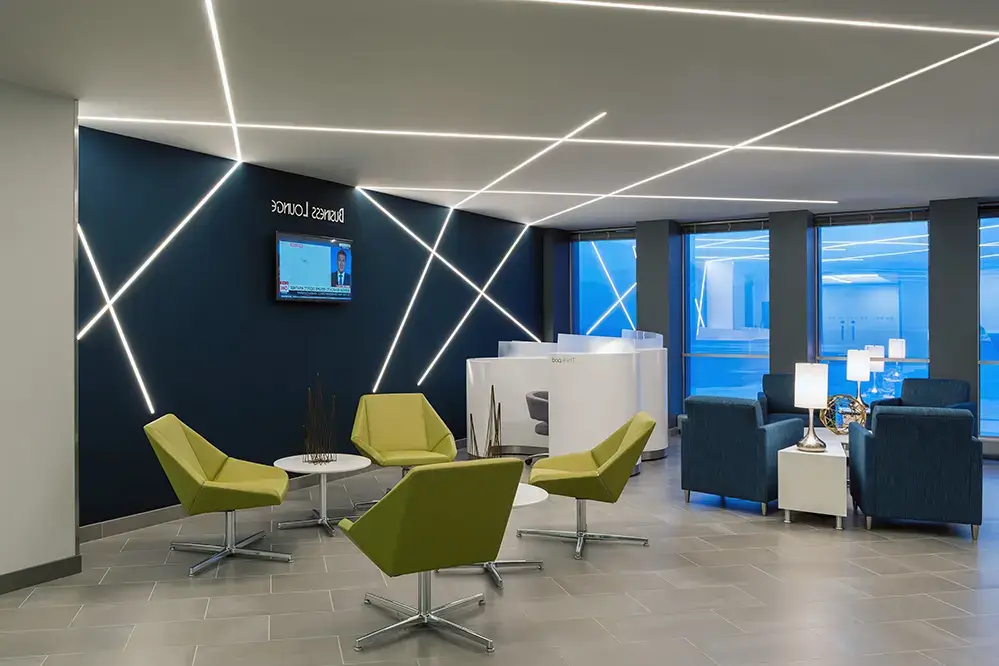
Retail Displays:
Retail environments require lighting that not only highlights products but also creates an inviting atmosphere. COB LED strips are ideal for display cases, providing even, bright light that makes products stand out. SMD strips can be used for decorative purposes, adding visual interest to the store layout.
Office Lighting:
In office settings, COB strips can be used for general lighting, ensuring a well-lit workspace that enhances productivity. SMD strips can provide accent lighting in meeting rooms or communal areas, creating a pleasant and professional environment.
Industrial Applications

Warehouse Lighting:
Warehouses and industrial spaces benefit from the high brightness and durability of COB LED strips. These strips can be installed in high ceilings to provide broad, even illumination, improving safety and efficiency. SMD strips can be used in specific task areas where flexibility and targeted lighting are required.
Outdoor Applications
Landscape Lighting:
For outdoor landscapes, SMD LED strips are a versatile choice. Their flexibility allows for creative installations along pathways, garden beds, and architectural features. Waterproof versions ensure durability in various weather conditions. COB strips can be used for larger installations that require intense, uniform light, such as lighting up trees or large garden features.
Outdoor Events:
Outdoor events, such as weddings or festivals, can benefit from both COB and SMD LED strips. COB strips can provide bright, consistent lighting for main areas, while SMD strips can add decorative and ambient lighting to enhance the overall experience.
Maintenance Tips for LED Strips
Proper maintenance can significantly extend the lifespan and performance of your LED strips. Here are some tips to keep your COB and SMD LED strips in top condition:
• Regular Cleaning: Dust and dirt can accumulate on the surface of LED strips, reducing their brightness. Clean them regularly with a soft cloth or a gentle cleaning solution.
• Check Connections: Ensure that all electrical connections are secure. Loose connections can cause flickering or intermittent lighting issues.
• Monitor Heat Levels: Overheating can shorten the lifespan of your LED strips significantly. Ensure they are installed in well-ventilated areas and consider using aluminum profiles or heat sinks for better heat dissipation, especially in high-power applications.
• Inspect for Damage: Regularly check for any physical damage to the strips or connections. Damaged sections should be repaired or replaced promptly to prevent further issues.
• Avoid Overloading Circuits: Make sure that your power supply matches the requirements of your LED strips. Overloading circuits can cause overheating and potential failure.
Future Trends in LED Strip Technology
The LED lighting industry is continuously evolving, bringing new technologies and innovations that enhance the performance and application of LED strips. Here are some emerging trends to watch:
• Smart LED Strips: Integration with smart home systems is becoming more prevalent. Smart LED strips can be controlled via mobile apps or voice assistants, offering convenience and customization for users.
• Higher Efficiency: Advances in LED technology are pushing the boundaries of energy efficiency. Future LED strips are expected to consume even less power while providing brighter and more uniform light output.
• Enhanced Durability: Improvements in materials and manufacturing processes are leading to more durable LED strips. These advancements are making LED strips suitable for more demanding environments, including industrial and outdoor applications.
• Color Accuracy: Development in LED technology is also focusing on achieving higher color accuracy and better color rendering indexes (CRI). This is particularly important for applications where true color representation is crucial, such as in photography or art galleries.
• Flexible and Bendable Designs: Innovations in the design and materials of LED strips are resulting in even more flexible and bendable options. This allows for greater creativity in lighting design and the ability to install LED strips in previously challenging locations.
FAQs
What is the primary difference between COB and SMD LED strips?
The main difference lies in their construction and light output. COB (Chip on Board) LED strips have multiple LED chips packed closely together as a single module, providing a continuous, uniform light output. SMD (Surface Mounted Device) LED strips consist of individual LED chips mounted separately, resulting in visible light dots and more flexible application options.
Which LED strip is more energy-efficient?
Both COB and SMD LED strips are energy-efficient compared to traditional lighting solutions. However, COB LED strips tend to be more efficient due to their advanced design and better heat dissipation. This makes them ideal for applications requiring continuous, high-quality lighting.
Can I use LED strips outdoors?
Yes, both COB and SMD LED strips are available in waterproof versions suitable for outdoor use. Ensure you select LED strips with appropriate IP ratings for outdoor installations to withstand various weather conditions.
How do I install LED strips?
Installing LED strips is generally straightforward. You can cut the strips to the desired length, attach connectors, and adhere them to the installation surface using the adhesive backing. For more complex installations, consider consulting a professional electrician to ensure safe and proper setup.
Are COB LED strips more expensive than SMD LED strips?
COB LED strips are typically more expensive due to their advanced technology and higher brightness. However, the long-term benefits, such as reduced energy consumption and maintenance costs, can offset the initial investment.
How do I maintain my LED strips?
Regular cleaning, inspecting for damage, ensuring secure electrical connections, and avoiding overheating are key maintenance steps. Proper maintenance can significantly extend the lifespan and performance of your LED strips.
Can I use LED strips for task lighting?
Yes, both COB and SMD LED strips can be used for task lighting. COB strips are particularly suitable for task lighting due to their high brightness and uniform light output, making them ideal for kitchens, workspaces, and other areas requiring focused light.
Conclusion
Understanding the differences and applications of COB and SMD LED strips is crucial for making the right choice for your lighting needs. Whether you’re aiming for high brightness and uniform light with COB strips or flexibility and cost-effectiveness with SMD strips, each type has its unique advantages. By carefully considering your specific requirements and the characteristics of each LED strip type, you can achieve optimal lighting results for any project.
If you’re looking to source high-quality LED strip lights, consider reaching out to Unitop. As a professional Chinese manufacturer of LED strip lights and LED neon strips, Unitop offers a wide range of products to meet various lighting needs. Their expertise and commitment to quality ensure that you’ll receive reliable and efficient lighting solutions. For more information or to place an order, contact Unitop today and discover the best in LED lighting technology.
